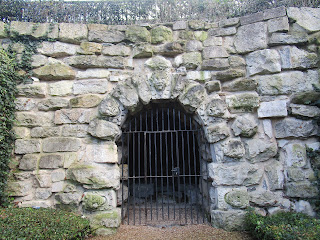The horrid oesophagal spasm which occasionally hits me very rarely starts up in the middle of the day, but that’s what happened as I was setting up for the midweek mass on the feast of blessed St Thomas Aquinas. The only way of stopping it is to swallow something. Water didn’t make any difference, so, avoiding Slimming World who were occupying the church hall, I shot into the kitchen and grabbed a tin of biscuits from the cupboard: eating one breached (my own interpretation of) the eucharistic fast, but the biscuit was horrible, so at least I suffered for it. The spasm was stilled and I was able to carry on.
That was physical pain; I took some emotional turbulence
into the service as well. In the midst of my distractions, I reflected how
wonderful it is to be carrying out this act that connects us to the eternal
worship of the angels, and also that, whoever I may be estranged from in this
earthly realm, those broken relationships will (in so far as they can, consonant
with the eternal justice of God) be made whole. That’s all very well: it blunts
the upset, or puts it into a wider context. At the very least, the words of
redemption and praise take you to a different place if only temporarily. But
the liturgy and the prayer it is part of doesn’t make the damage go away.
My Spiritual Director was told, as a young priest, ‘You
will never get anywhere in the Church if you insist on being so personal in
your sermons’. I talk about my own experiences and those of people I know all
the time, so I disagree (not that I have ever wanted to ‘get anywhere’
in the Church); but a pastor’s congregation, I think, are caught in
contradictory feelings about this. They want their minister to ‘seem human’, to
have some sense that they too are subject to frailties and disappointments, but
they don’t necessarily want to know in any detail what they are. Equally, the pastor may want to bring personal experience to bear to inject some reality into what they talk about, but it's a tactic fraught with hazard. Oversharing might
not only head into areas that most people would rightly be reluctant to talk
about, but might also be burdensome. You can think of circumstances (of illness
or another misfortune) when a minister might need to be ‘held up’ by their people,
but you don’t want them to become reluctant to share difficulties with you themselves
out of concern for your own welfare.
The Feast of the Angelic Doctor afforded me limited opportunity to discuss my own difficulties anyway, and in the end I tend to veer away from deep emotional waters unless I have navigated them many times before and know how to talk about them in a way others may find helpful. Because ultimately the pastor's job is to serve, and only relieve your own burdens when it will definitely benefit your listeners to do so.






















